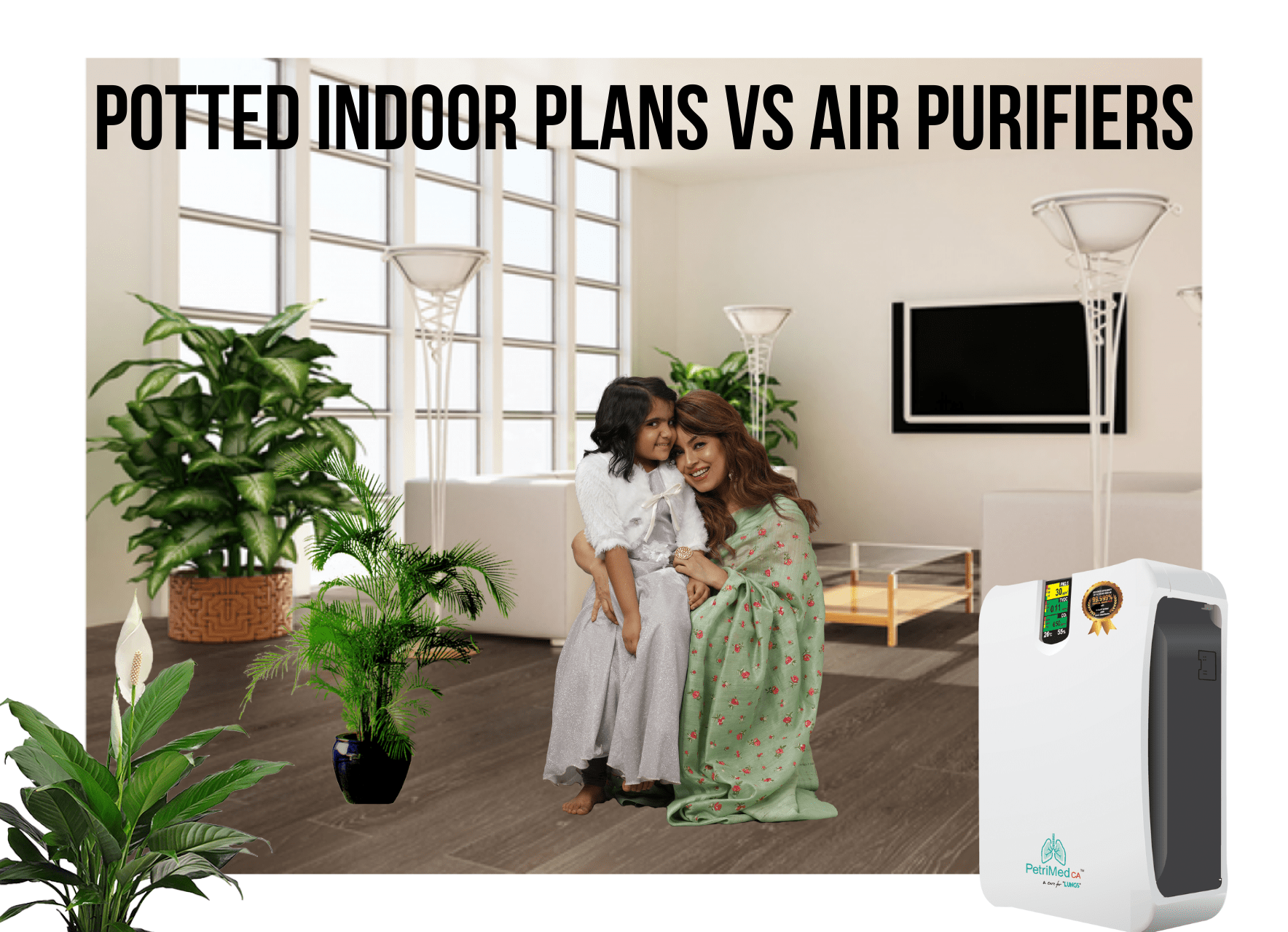Potted Plants Vs Air Purification System: Indoor Plants Don’t Improve Air Quality
12 Apr 2022
The latest fad circulating currently is GO GREEN…GO NATURAL…GO ORGANIC.
Contrary to a common misconception, according to a new research paper, using a few indoor plants can hardly do much in purifying the indoor air.
In the fast few years, an argument about mechanical air filtration versus natural air filtration has become much talked about. In particular, a lot of people wonder whether a potted plant could be a
better option than an air purification system in India for improving indoor air quality.
What added to this argument was a study paper published by NASA in 1989, which summarized that the plants could be used to reduce the level of harmful pollutants. The study was aimed at finding ways of purifying the air on space stations.
But due to its limited conducts, the study raised some serious questions. The study was steered in a closed chamber – a controlled environment which is different than that of a house or office.
Let’s find out an honest answer to the discussion over air purifier vs indoor plants.
Researchers from Drexel University in the US negated the theory claimed by NASA, saying that the capability of indoor plants has massively been overstated in purifying indoor air quality. They have summarized that the plants are less effective in removing volatile organic compounds.
Indoor plants vs. Air Purification System—How does the argument begin?
As mentioned above, it all started with a NASA research paper that concluded with an argument that some potted plants could have natural capability to remove VOCs in a sealed chamber. The researchers found that around 10-90% of VOCs were absorbed from the sealed chamber.
A lot of people started believing that the houseplants worked as a natural air cleaner. It was commonly accepted for many years until a new study, conducted by two Drexel University scientists in 2019, negated the claim.
The scientists found that the circumstances of the NASA examination were contrary to the conditions found in everyday indoor spaces. And this is why the findings couldn’t be applicable to every condition. While technically yes, plants have a natural power to remove VOCs, but the process of purifying indoor air is not as fast as we consider them a perfect air purifier.
To make it more interpretable, the scientists used Clean Air Deliver Rate (CADR) to measure the volume of air purified a portable air purification system in India offers. The higher the CADR, the more effective the purifier it is. The study found that the potted plants’ CADR is very low—it means that it will require up to a 1000 houseplants/m2 for removing VOC and other pollutants with the standard air exchange rate. It means you would require placing a lot houseplants in your room.
The study concludes, the efforts of improving poor indoor air quality in future should be shifted to using an advanced air purification system to mechanically improve the indoor air through high-end air filtration technology.
The Better Air Solution for Indoor Space:
While technically both plants and purifiers remove some certain pollutants, the latter is the winner because of the latest filtration technology. Keeping in mind the number of plants required in a closed space for reducing the level of VOCs and other pollutants, they are not viable in any manner.
Plus, the plants are found to be effective against gaseous pollutants only. But some other types of pollutants like dust, dander, PM2.5, allergens, and pollens cannot be reduced by houseplants.
If the objective is to nourish indoor air, then PetriMed CA APS-400 would be a better option than the ordinary HEPA air purifiers available in the market. This is the most efficient air purification system for home and offices, engineered to purify indoor air by removing 99.999% of harmful pollutants. It is a 3-storey purification system loaded with HEPA H-14 ISO 50U filter, pre-activated carbon filter, UV-C disinfector and Ionizer.
There is nothing wrong with houseplants—it adds a sense of freshness to the indoor ambience. Yet, an effective air treatment solution is needed to create a space where everyone can breathe easy.
